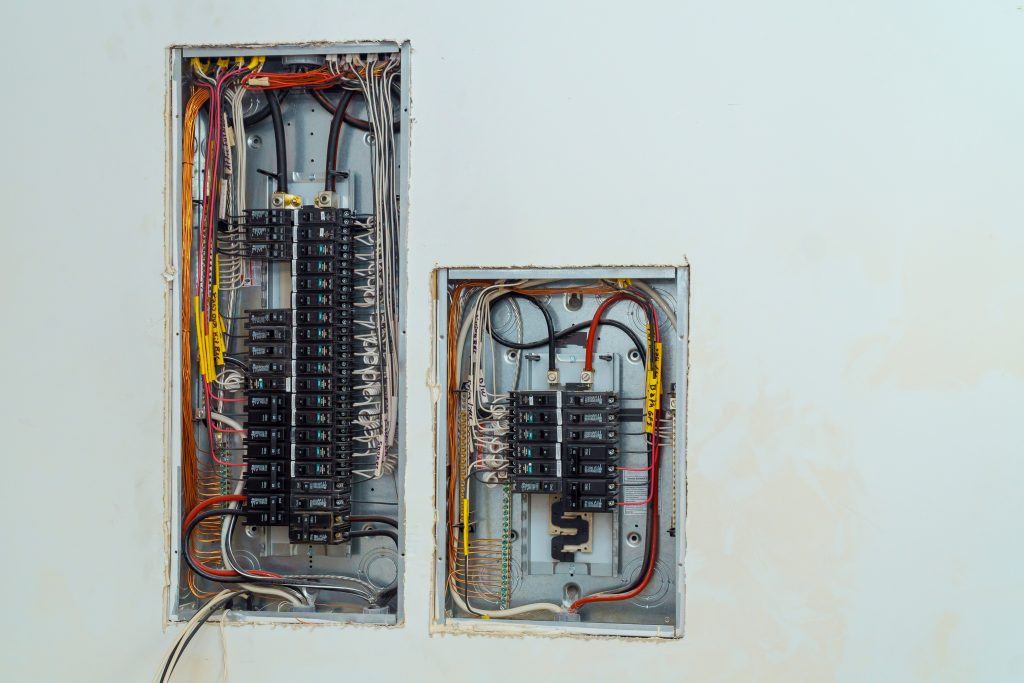Dealing with electrical panel might be overwhelming, especially for firs time homeowners. However, understanding it’s parts and functions can help you maintain safety and efficiency in your home. We’ve compiled a few points to get you started with learning about your electrical panel.
What is an Electrical Panel?
An electrical panel is the command center of your home’s electrical system. It distributes power to every room and appliance within your home. Sometimes called a breaker box or circuit breaker panel, it houses individual circuit breakers or fuses that control the flow of electricity. It’s the metal box typically found in a utility room, garage, or basement.
Parts of an Electrical Panel
- Main Breaker – a large switch that controls the power supply of your entire home. It’s a master switch that can shut off all electricity in emergencies or major repairs.
- Circuit Breakers – individual switches that provides power to specific parts of your home which can be turned on and off individually. It protects electrical and electrical equipment by automatically shutting off in case of an overload to prevent hazards.
- Bus bars – metal bards that distribute power from the main breaker to individual breakers. Make sure to not touch these with bare hands because they get super hot.
Tips for Safely Inspecting Your Panels
- Always disconnect power by turning of the main breaker during repairs for circuits or appliances.
- Don’t overload your circuits by being avoiding plugging too many or high-wattage devices into a single outlet.
- Label each breakers in your panel to know which one controls which areas of your home to quickly navigate them during emergencies.
- Know when you should call for a professional; burning smells, sparks, or frequent breaker trips calls for a licensed electrician.
Why should you know this?
- Safety First – knowing how to handle electrical emergencies like fires or flooding by turning off the main breaker is an essential information to know. Knowing how to troubleshoot and assess breakers in case of power loss or issues can save you from different hazards.
- Upgrading and Maintenance – you’ll be able to assess any outdated components, insufficient capacities, and when to upgrade your electrical needs.
Be proactive in keeping your home safe and powered by familiarizing yourself with your home’s electrical system. Having this knowledge can help you be able to properly assess any electrical issues that may arise. If you’re not sure about anything, don’t hesitate to call your local licensed electrician.
